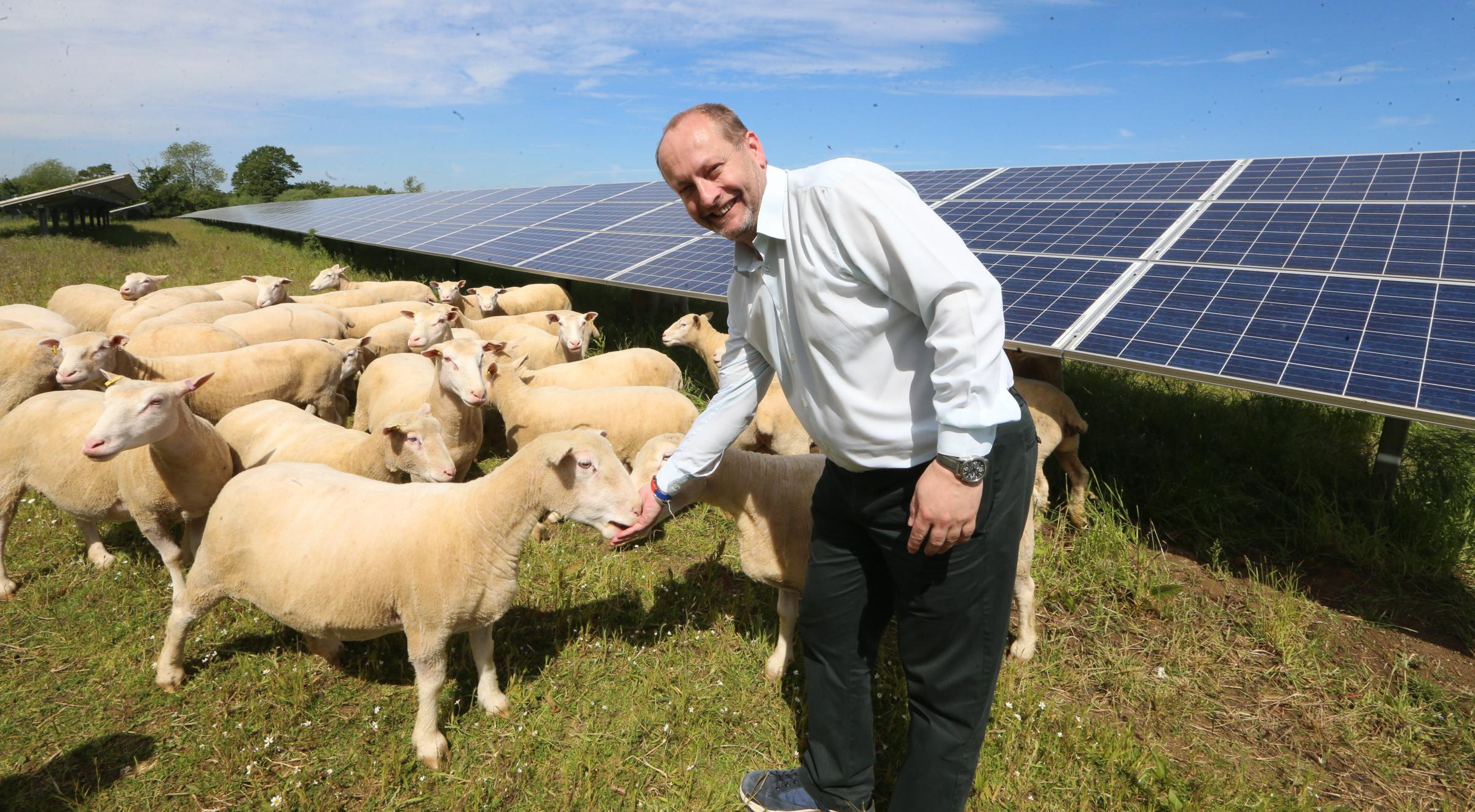Whitehall’s confirmation that solar farms are the cheapest way to power Britain is “a wake-up call for opponents of Net Zero”, says trade body Solar Energy UK.
Last week energy ministry D-ESNZ published its latest revisions of levelised “generator-gate” costs, comparing costs of production across the lifetimes of rival generation plants, benchmarking big solar farms against new gas-fired generation, and marine and onshore wind turbines.
Over a farm’s decades of output, solar output cost now averages £41 per MWh from utility-scale projects coming online next year, the department now reckons,
For new gas power stations, equivalent lifetime costs will be in the region of £114 per MWh, or almost three times as expensive.
Photovoltaic’s “solar farm gate” average of £41 per MWh next year is itself a fall from the £47 registered as recently as 2022. The minstry’s revisions tweak figures from a 2020 study by energy economists WSP.
More and bigger PV farms receiving planning approval, boosted by continuing breakthroughs in panel efficiency, will push solar’s unit costs of output lower yet, D-ESNZ’s analysts believe.
£30 per MWh is the ministry’s likeliest estimate for solar in 2040, or even £26/MWh if the strain’s various emerging technologies such as perovskite continue its two decades of outpacing experts’ predictions. Over the same period, the cost of gas generation would have risen – see chart -to an eye-watering £165/MWh.

Little changed in D-ESNZ’s figures, as cited by trade body Solar EnergyUK, are costs related to deployment of new wind farms in England.
Though the Johnson administration nominally lifted David Cameron’s ban on shire-mounted turbines imposed in 2016, a brace of Conservative successors since 2022 have neglected to lift the planning guidelines which in effect maintain it.
Solar farms are getting bigger, aided by falling costs of modules, a fall now mimicked by battery makers. Britain’s biggest utility-scale PV farm to date, EDF’s 400MWp Longfield plant near Hatfield Peverel, Essex received the Planning Inspectorate’s blessing in June, as a nationally significant infrastructure project.
The Essex venture surpasses joint developers’ Hive and Wirsol’s 350MW Cleve Hill project in north Kent, consented in 2021 with 700MW of battery storage. Construction began near Faversham this spring.
Commenting on D-ESNZ’s latest cost revisions, solar industry spokesman Chris Hewett said “This is yet another ringing endorsement of solar energy in the UK. It further justifies the government’s target to reach 70GW of capacity by 2035.
“In Britain, power generated by the sun is now a third of the cost of power made from burning gas and it will only get cheaper. The fastest way to permanently drive down energy bills is to build more renewables,” the Solar Energy UK chief executive went on.
Representing importers, manufacturers and installers of solar kit, the trade body says true costs of sun-orginated electricity may be lower yet than the ministry’s benchmarks. Grid connections sharing with battery energy storage systems could further depress costs, and speed deployment.
Yesterday developers IB Vogt and Leeds-based Firma Energy announced their joint intention to site 150MWp of solar arrays and 100MW of batteries on 300 acres at Dean Moor, near Branthwaite in west Cumbria. Public consultations will begin this autumn.
With now 40GW in its global pipeline, IB Vogt have a ten-year presence in UK solar. Launching in 2021, Firma Energy’s founders Andrew Jones and Rufus claim 260 MW of generation, plus 347MW of utlity-scale storage, in development.




